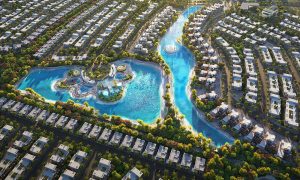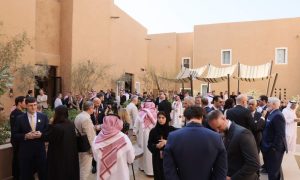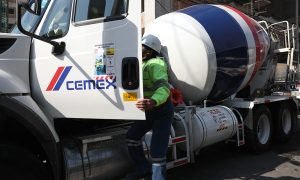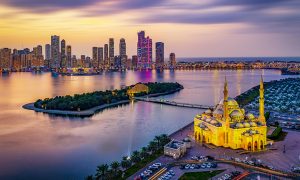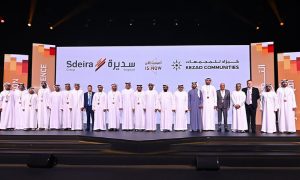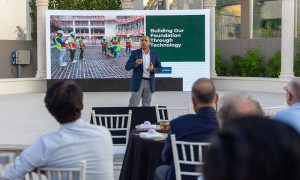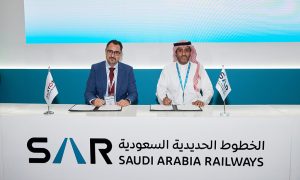Dubai Metro stations turned into works of art
HH Sheikh Mohammad launches initiative to have artworks and exhibitions from museums showcased at Dubai Metro stations
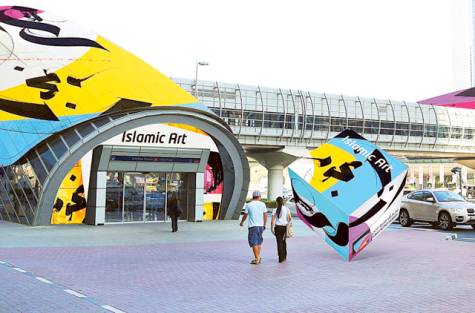

Dubai Metro stations will soon be hosting artworks and exhibitions from museums around the world. (Image source: WAM).
RELATED ARTICLES: Dubai Tram project the beginning of Rail Master Plan | RTA endorses Jumeirah Corniche Development project | Dubai Metro to get two new stations
Dubai Metro stations could soon play host to a variety of artworks and exhibitions from a number of different museums, it has been announced.
According to a Gulf News report, work on transforming the stations will begin within the next few weeks, with the museums to be ready in time for the launch of Art Dubai 2015. The stations will continue to provide safe and effective transport for all of Dubai’s residents in the meantime.
Launched by His Highness Sheikh Mohammad Bin Rashid Al Maktoum, Vice-President and Prime Minister of the UAE and Ruler of Dubai, the initiative will ‘add a new aspect to the transportation experience in Dubai and create an encouraging environment for art, culture and society.’
“Creativity and beauty are an essential part of our culture and identity, and is part of our daily life. Our aim is to enhance the quality of life and transport, and transform Dubai Metro stations into destinations of culture, creativity and aesthetics,” said Shaikh Mohammad, after he viewed a presentation on the Dubai Metro Museum project on Monday, March 17, 2014.
Phase I of the project will see four stations, previously identified, used as a test for the project. Each will be transformed according to a particular theme. Islamic Art and Arabic calligraphy, inventions, contemporary art and visual art will be the four themes around which the four Metro museums will be built.
The Islamic Art and Arabic calligraphy museum will feature a collection of artworks inspired by Islamic art and its evolution over the past 1,400 years. The art pieces will vary between manuscripts, mosaics and jewellery. In addition, other exhibits and paintings will be set up.
The inventions museum will offer visitors and interactive learning experience, bringing to life some of the most important inventions in humanity’s history, the report said. The inventions covered will include engineering, medicine, astronomy, mathematics and geography.
The contemporary art museum will showcase modern art through various collections that reflect creative expressionism. It will include paintings, graphics and models.
The visual art museum will highlight the contemporary visual art scene through a variety of methods, including film, multimedia and recorded materials. The museums will have smart applications and advanced technologies in line with Dubai’s Smart Initiative, which was launched by Sheikh Mohammed.
“The art will add richly to the daily life in Dubai where the museums will become key destinations in our society, and a primary component of the details of daily life. The UAE has been playing a vital role in boosting the art scene on both the Arab and global stages, and managed to serve as a cultural bridge between the East and the West,” he said.
Sheikh Mohammad added that art is a ‘global language’ that unified humanity and brought together various nationalities, cultures and languages, while removing barriers between them.
Mattar Al Tyer, chairman of the board and executive director of the Roads and Transport Authority (RTA) welcomed the initiative and said that it would add a new element of attraction to passengers, and an ‘aesthetic dimension’ to the Metro stations.
“Operational aspects of the Metro stations will be taken into consideration so as not to affect the traffic movement and the travelling of passengers through Metro stations, as well as to ensure that all safety and security standards are in place,” he added.
The RTA will coordinate with Dubai Culture and other relevant authorities to put Sheikh Mohammad’s plan into immediate action, with work on transforming Metro stations set to start as soon as possible.
137 million passengers travelled on Dubai Metro in 2013, figures released by the RTA showed. This amounted to 500,000 people a day, making it the most preferred public transport mode in the city.
Dubai Metro is also the world’s largest driverless Metro network, spread across 75 kilometres and passing right through the heart of Dubai. The network is supported by 48 stations across two lines and has so far served 375.546 million passengers since its launch in 2009.
